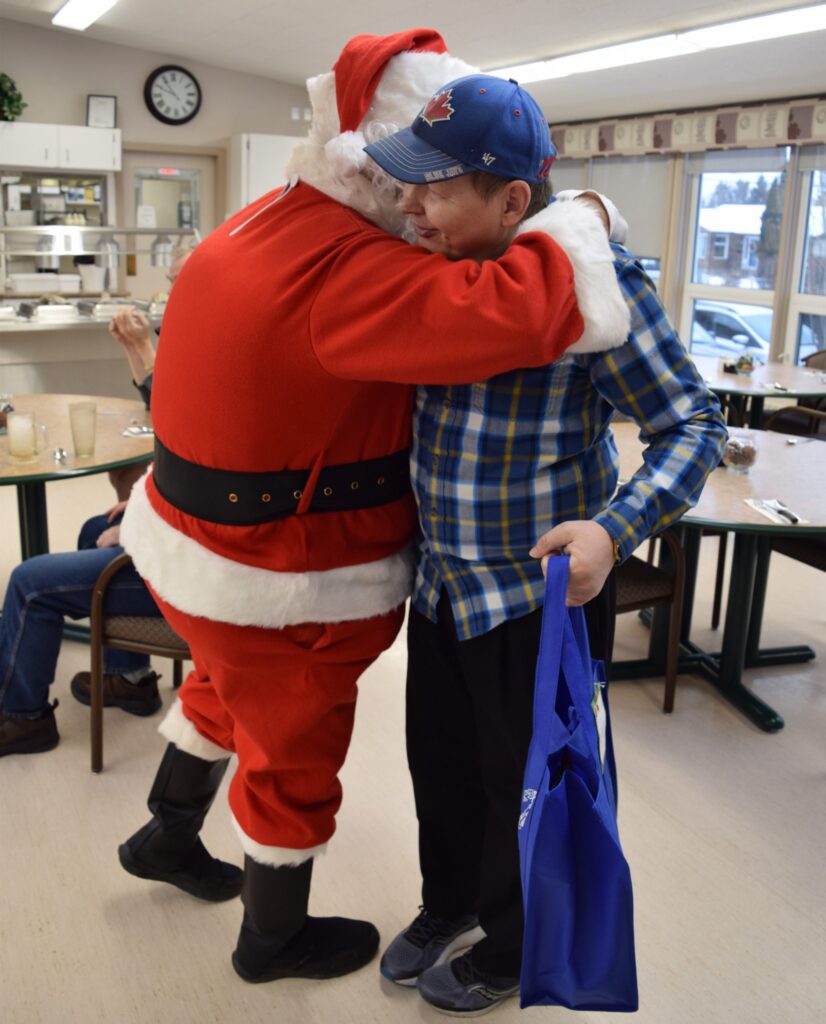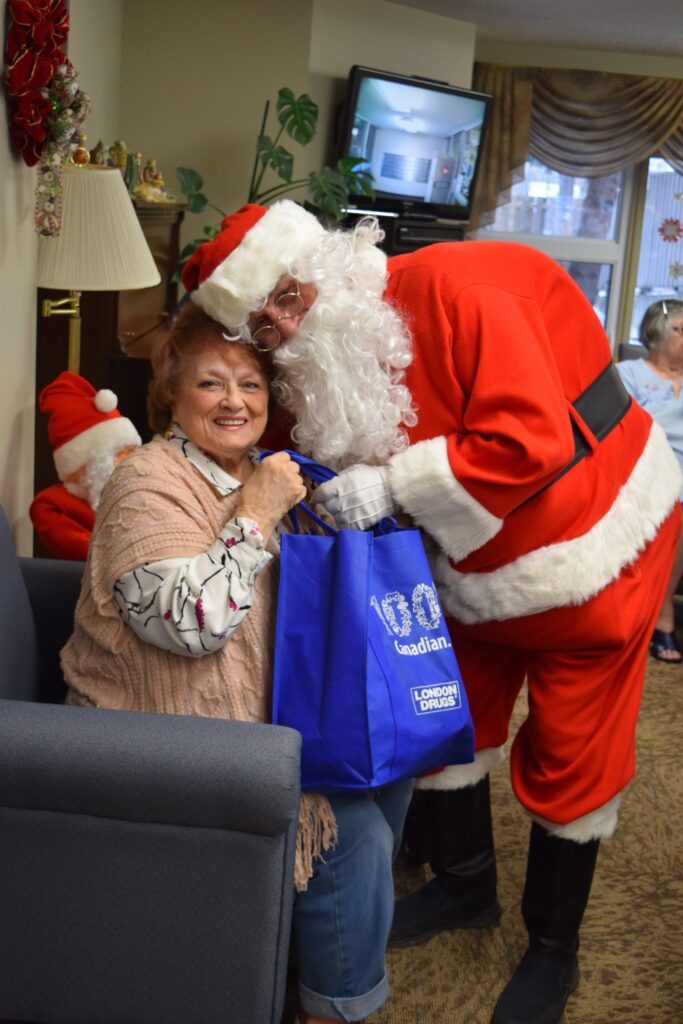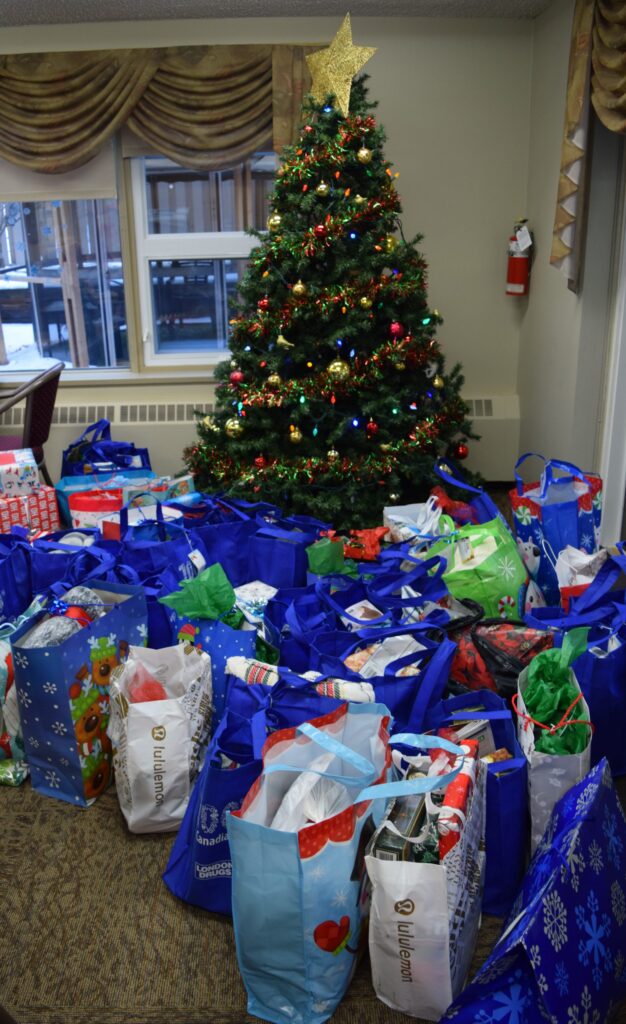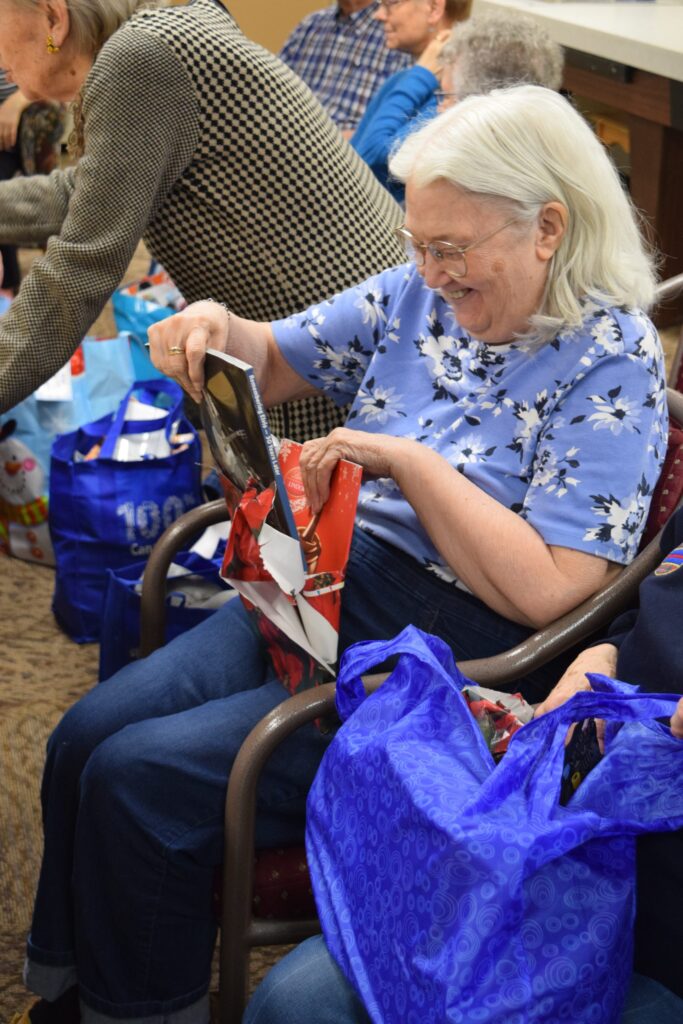Tag: charity

I was a very magical few days in December for hundreds of GEF Seniors Housing residents when Santa and his elves made their rounds to deliver presents as part of London Drugs’ Stocking Stuffers for Seniors 2019 Campaign.
What started out in 2015 with Operation Friendship Seniors Society and London Drugs partnering together with a goal to help 40 seniors in its first year has grown exponentially in five short years. Today, Stocking Stuffers for Seniors helps more than 4,000 seniors in Northern Alberta and 17,000 seniors across Western Canada have a brighter Christmas! The campaign now involves all London Drugs stores. Altogether, 878 seniors in eight different GEF Seniors Housing communities received a gift this holiday season.

The approach is simple, but the impact is immeasurable. Generous strangers carefully choose a name tag from specially-marked tree displays at their London Drugs store of choice and, our of the goodness of their hearts, but what’s written on the tag as their senior’s wish list – often adding in a few extra surprises. “I think the generosity of others in the community and the surprise of receiving a gift was really awesome,” said Montgomery Place Recreation Coordinator, Christine Kemp.
On delivery day, everyone was buzzing with anticipation. “I was up early – I am so excited!” said one resident. Santa and his London Drugs elves arrived, and the faces of residents and staff lit up like Christmas trees. “It was like Christmas morning for these residents – they were glowing,” said one staff member.

It was an overwhelming sight to see the number of presents that showed up under the trees at our GEF communities. After the gifts were distributed, residents started opening their presents. As well as the chorus of “oohs” and “aahs” around the room, seniors said comments like “This is more than I expected,” “This is over and above anything I could have imagined,” “I got just what I wanted,” “I wish I could say thank you to all the kind people,” and “I don’t usually get excited for Christmas anymore but this brought back feelings that I had as a kid.”

Some of our residents don’t have family so it was a surprise to them when they received a gift. “I wouldn’t have gotten any Christmas gifts this year, so thank you very much,” said one resident. At least one senior saved his presents to open on Christmas day because he doesn’t have any family. These unexpected gifts, filled with love, showed the residents just how much ther are cared for and each senior was grateful for what they had received.
“When you see someone’s face light up and the expression of someone who doesn’t normally get this, it’s a really special feeling and it makes my heart happy!” said another staff member.

Thank you to everyone who contributed to making this Christmas so memorable – not just for our seniors, but for all of the participating seniors who needed a little cheer this year! It will be a day they will never forget.